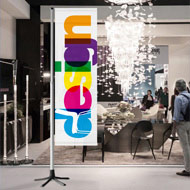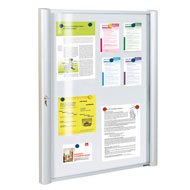Rechtliches zu Verbotsschildern
Samstag, 15. Dezember 2018
Bei der Gestaltung und dem Anbringen von Verbotsschildern kommt es darauf an, ob es sich um ein Warnschild handelt oder ob es nur ein Verbot aussprechen soll, dass sich der Aufsteller wünscht.
Ein fehlendes Schild, beispielsweise "Aufzug im Brandfall nicht benutzen", kann rechtliche Konsequenzen nach sich ziehen, wenn Personen zu Schaden kommen. Im Schadens- oder Unglücksfall muss der Betreiber einer Anlage nachweisen, dass seine Beschilderung gemäß der ISO 7010 vor einer Gefahr gewarnt hat.
Auch das Mitführen von Hunden ist ein gutes Beispiel. In einem Krankenhaus oder einem Lebensmittelbetrieb ist es aus hygienischen Gründen durchaus vorgeschrieben. Der Inhaber eines Bekleidungsgeschäftes hat sicher gute Gründe für das Verbot, kann das Verbotsschild aber ohne die Gefahr von rechtlichen Nachteilen beliebig gestalten.
Verbote haben aber auch Grenzen. An ein Kleiderverbot in einem Kaufhaus muss sich niemand halten und ein Rauchverbot in einem Mietshaus betrifft nur die allgemeinen Räume, nicht die Wohnungen.
Das Aufstellen von Schildern an Straßen und Plätzen ist eine hoheitliche Aufgabe. Laut § 33 Abs. 2 StVO dürfen Zeichen, die mit amtlichen Schildern verwechselt werden können, nicht dort angebracht werden, wo sie sich auf den Verkehr auswirken. Hier droht ein kleines Bußgeld von 15 Euro.
Wenn es den Anschein hat, dass das Verbotsschild absichtlich ein Verkehrszeichen darstellen soll um den Verkehr zu beeinflussen, kann auch der §132 StGB zum Tragen kommen. Die Amtsanmaßung könnte bis zu zwei Jahren Freiheitsstrafe nach sich ziehen.
Wer im Außenbereich Verbotsschilder aufstellt, sollte daher darauf achten, dass diese keinen Verkehrszeichen gleichen. Wer beispielsweise nicht möchte, dass Autofahrer in eine Einfahrt fahren, sollte als besser ein Testschild wählen, statt eines der amtliche Zeichen 250 – 267.

Vorschrift oder nicht – das ist die Frage
Immer wenn es darum geht, durch das Verbot eine Gefahr abzuwenden, ist davon auszugehen, dass es zumindest eine indirekte Vorschrift gibt. In erster Linie betrifft dies Verbotsschilder an Arbeitsstätten, aber auch Gewerbeordnungen und Bauvorschriften können Regelungen enthalten. Meist geht es aber bei Verbostschildern um einen Haftungsausschluss.Ein fehlendes Schild, beispielsweise "Aufzug im Brandfall nicht benutzen", kann rechtliche Konsequenzen nach sich ziehen, wenn Personen zu Schaden kommen. Im Schadens- oder Unglücksfall muss der Betreiber einer Anlage nachweisen, dass seine Beschilderung gemäß der ISO 7010 vor einer Gefahr gewarnt hat.
Abgrenzung zwischen freiwilliger und vorgeschriebener Beschilderung
Ein und dasselbe Verbot kann freiwillig bestehen oder aufgrund einer Vorschrift gelten. Das Schild "Rauchen verboten" ist in der Nähe einer Tankanlage sicherheitsrelevant und muss daher der Norm entsprechen. Wenn dagegen nur der Wunsch besteht, einen Raum rauchfrei zu halten, darf dies auch mit reinen Rauchverbot-Textschild oder sogar einem witzigen Schild ausgedrückt werden.Auch das Mitführen von Hunden ist ein gutes Beispiel. In einem Krankenhaus oder einem Lebensmittelbetrieb ist es aus hygienischen Gründen durchaus vorgeschrieben. Der Inhaber eines Bekleidungsgeschäftes hat sicher gute Gründe für das Verbot, kann das Verbotsschild aber ohne die Gefahr von rechtlichen Nachteilen beliebig gestalten.

Wer muss sich an die Verbotschilder halten
Besucher müssen sich in der Regel an die durch die Schilder ausgesprochenen Verbote immer halten, denn der Hausherr hat ein Hausrecht. Sogar das Verbot, Kleidung zu tragen, kann rechtens sein, beispielsweise in einer Sauna oder an einem privaten FKK-Strand.Verbote haben aber auch Grenzen. An ein Kleiderverbot in einem Kaufhaus muss sich niemand halten und ein Rauchverbot in einem Mietshaus betrifft nur die allgemeinen Räume, nicht die Wohnungen.
Verbotsschilder im öffentlichen Raum
Das Aufstellen von Schildern an Straßen und Plätzen ist eine hoheitliche Aufgabe. Laut § 33 Abs. 2 StVO dürfen Zeichen, die mit amtlichen Schildern verwechselt werden können, nicht dort angebracht werden, wo sie sich auf den Verkehr auswirken. Hier droht ein kleines Bußgeld von 15 Euro.
Wenn es den Anschein hat, dass das Verbotsschild absichtlich ein Verkehrszeichen darstellen soll um den Verkehr zu beeinflussen, kann auch der §132 StGB zum Tragen kommen. Die Amtsanmaßung könnte bis zu zwei Jahren Freiheitsstrafe nach sich ziehen.
Wer im Außenbereich Verbotsschilder aufstellt, sollte daher darauf achten, dass diese keinen Verkehrszeichen gleichen. Wer beispielsweise nicht möchte, dass Autofahrer in eine Einfahrt fahren, sollte als besser ein Testschild wählen, statt eines der amtliche Zeichen 250 – 267.




















































